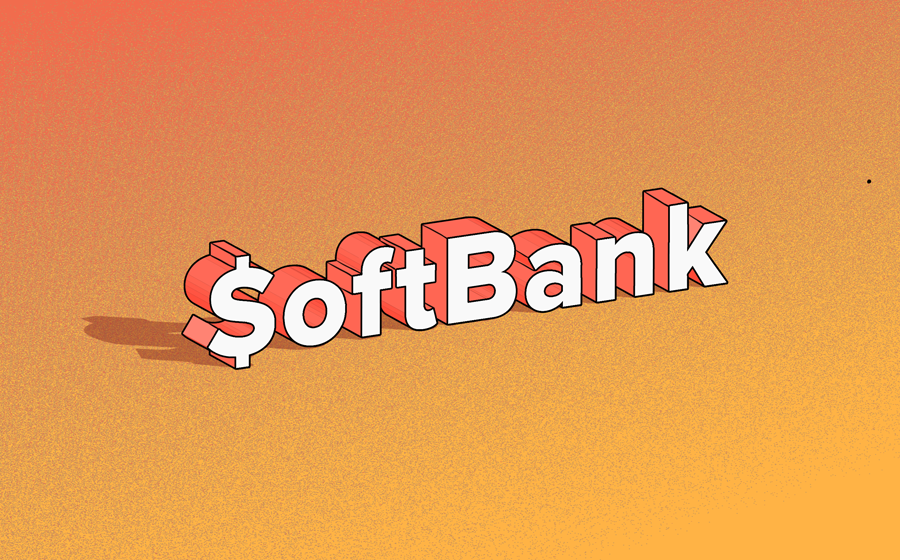This week SoftBank announced the “planned establishment” of the Vision Fund 2, a creatively-named successor to the famous, market-bending Vision Fund. The new fund will total at least $108 billion, making this sequel larger than its predecessor.
Subscribe to the Crunchbase Daily
SoftBank’s first Vision Fund’s epic size, large checks, and rapid-fire investment strategy shook the private markets. Companies of all sorts accepted money from Vision Fund 1 including Slack, Wag, Uber, WeWork, and a host of others that you have heard of, along with a number of companies that you haven’t.
The ability for SoftBank, through its Vision Fund arm, to roll into high-growth private companies and hand them hundreds of millions — and in some cases, billions — of dollars reshaped the venture capital landscape. In response, some venture investors raised larger funds (see chart below) to compete.
While the Vision Fund 1 was world-impacting, whether it has proved sufficiently successful to warrant the creation of a successor was unclear until this week. While news had swirled that SoftBank was struggling to find the capital for Vision Fund 2, the Japanese conglomerate did find sufficient LPs to fund its new weapon.
It’s a long list. Indeed, per the company’s own notes, the list of investors goes as follows (condensed, edited):
SBG, Apple, Foxconn Technology Group, Microsoft Corp., Mizuho Bank, Sumitomo Mitsui Banking Corp., MUFG Bank, The Dai-ichi Life Insurance Co., Sumitomo Mitsui Trust Bank, SMBC Nikko Securities, Daiwa Securities Group, National Investment Corporation of National Bank of Kazakhstan, Standard Chartered Bank, and “major participants from Taiwan.”
SoftBank won’t just deploy other peoples’ money, however. It will put about $38 billion of its own into the second Vision Fund, making it an anchor LP of the investment effort. SoftBank is, therefore, making a large, public double-down on its own strategy and vision for the future.
There is also a chance that there’s more capital coming in that has yet to be announced. Axios reported this morning that Saudi Arabia and the UAE may contribute dollars on top of the $108 billion. If that works out, we’ll not only see the Vision Fund 2 swell in size, but we’ll also endure a repeat of the ethical issues that dogged Vision Fund 1; can you take money from theocratic monarchies with terrible human rights records if it is cycled through a multinational investment vehicle first? It’s mostly turning out that you can (more here).
Scale
While the Vision Fund 2 is happening, its exact final investing total and list of LPs aren’t fully baked. SoftBank itself notes in its release that its “total expected contribution of capital” is $108 billion based on various “Memoranda of Understandings.” That’s fine, but it’s not final final. Things could still shift about a little.
That aside, this is what the $108 billion sum looks like compared to some other 2019-announced venture funds of at least $1 billion:

Key LPs
Seeing Microsoft and Apple as listed LPs in Vision Fund 2 is perhaps unsurprising. The two American technology giants are cash-rich and likely ready to buy a piece of the future or invest in enough technology companies to get a feel for change underneath their vision. (This is the 500 Startups model, but a late-stage variant.)
I was skeptical of the idea of Microsoft as an LP in the Vision Fund because I made the mistake of grounding my views in the historical Microsoft, the same firm that was reticent to cut its own venture checks because it could only view those efforts through a balance-sheet focused lens. New Microsoft is out there buying GitHub and forking dollars into the Vision Fund. New Microsoft is more fun!
The existence of Apple and Microsoft and SoftBank on the same cap table helps make the case that there could be a Vision Fund 3. The trio could fund it themselves if they wanted. They won’t, but the fact means that if the Vision Fund 2 does well, a second sequel to the original isn’t impossible.
As I wrote this morning, there’s reason in the market to worry that today’s expansion and welcoming public markets will eventually change their tune. But it’s hard to not cast the Vision Fund 2’s existence as bullish and optimistic.
For the myriad unicorns hungry for capital but too immature for an IPO, the Vision Fund 2 could be a godsend. For one country in particular, the second Vision Fund has special importance. And no, we’re not talking about the domestic market. Let’s talk about China and its recent troubles.
China
As we’ve reported, China’s share of the global venture market has collapsed. Even more, its share of supergiant rounds (funding events of $100 million or more) has crashed. Those are the very sort of checks that the Vision Fund 2 will be able to write.
Which means that how the Vision Fund 2 approaches investing in China’s startup scene could set the tone for recovery of the China-based venture market (in supergiant terms, at least), or its continued disappointment. If the Vision Fund works aggressively in China, it could turn the tide and reverse the country’s current private capital slide. Or not.
That’s the power of a $100 billion vehicle. Or a $108 billion vehicle, but who’s counting.
Illustration: Li-Anne Dias.

Stay up to date with recent funding rounds, acquisitions, and more with the Crunchbase Daily.






![Illustration of a guy watering plants with a blocked hose - Global [Dom Guzman]](https://news.crunchbase.com/wp-content/uploads/quarterly-global-3-300x168.jpg)
67.1K Followers